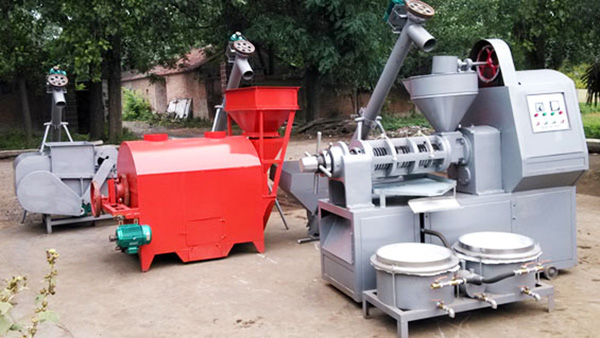
You may be wondering how to efficiently extract high - purity sesame oil in your small or medium - sized factory. Let's break down the sesame oil extraction process step by step. It mainly consists of cleaning, drying, pressing, filtering, and filling. Each stage plays a crucial role in determining the final product's purity and consistency.
During the cleaning stage, removing impurities from raw sesame seeds is essential. Even small amounts of dirt or debris can affect the oil's taste and purity. After that, proper drying is necessary to control the moisture content. Generally, the moisture content of sesame seeds should be around 5 - 7% for optimal oil extraction. This is because excessive moisture can lead to lower oil yield and affect the stability of the oil during storage.
There are two main methods of pressing: cold - pressing and hot - pressing. Cold - pressing is known for retaining more nutrients in the oil, but the yield is relatively low, usually around 30 - 35%. Hot - pressing, on the other hand, can increase the yield to 40 - 45%, but it may also destroy some heat - sensitive nutrients. The choice between the two depends on your product positioning and market demand.

Filtering is a key step to improve the purity of sesame oil. Different filtering technologies can have a significant impact on the final product quality. Advanced filtering systems can remove tiny impurities and improve the clarity and shelf - life of the oil.
When it comes to equipment selection, small and medium - sized factories need to find a balance between energy consumption, floor space, and production capacity. We've compared different models and found some high - purity sesame oil extraction systems that are well - suited to your needs.
For example, some energy - efficient models can reduce energy consumption by up to 30% compared to traditional equipment. They also have a smaller footprint, which is ideal for factories with limited space. In terms of production capacity, there are models that can produce from 50 to 500 liters of sesame oil per day, allowing you to choose according to your actual production volume.
To ensure continuous and efficient production, here are some practical operation optimization tips. First, for continuous operation maintenance, regular cleaning and lubrication of the equipment are necessary. This can extend the service life of the equipment and reduce the risk of breakdowns.
Controlling temperature and pressure parameters is also crucial. For example, during the pressing process, maintaining a pressure of 20 - 30 MPa and a temperature of 60 - 80°C can improve the oil yield and quality. Additionally, improving the efficiency of impurity removal can enhance the purity of the oil. By using advanced filtration materials and techniques, you can remove up to 99% of impurities.
Let's take a look at some real - world case studies. One small factory used our recommended equipment and operation optimization techniques. Before the upgrade, their daily production was only 100 liters with inconsistent quality. After implementing our solutions, their daily production increased to 250 liters, and the oil purity improved significantly. According to the factory owner, "The new equipment and processes have helped us achieve stable quality and higher production efficiency."
"This sesame oil extraction system has truly changed our production. The energy consumption is lower, and the oil quality is much better. We are very satisfied with the results." - A satisfied customer
Do you have any questions about sesame oil extraction technology or equipment selection? You can click the following link to enter our online Q&A section: Online Q&A.
We also plan to hold a technical lecture soon. Stay tuned for more details. By participating in these activities, you can gain more in - depth knowledge and practical experience.
Don't miss this opportunity to transform your sesame oil production. Click here to get your exclusive equipment solution now!